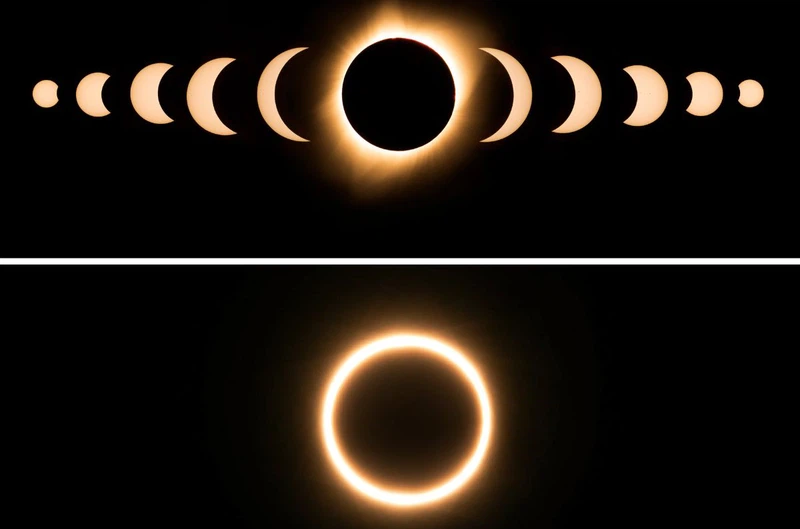
It is almost time for the ‘RING OF FIRE’ eclipse
It is almost time for the Ring of Fire Solar Eclipse. This awe-inspiring phenomenon is set to captivate the skies.

An annular solar eclipse will make its appearance in the skies on October 14, creating a singular spectacle for those in its path.
IT IS ALMOST TIME FOR THE ‘RING OF FIRE’ ECLIPSE
A Ring of Fire Solar Eclipse, also known as an annular solar eclipse, occurs when the moon moves between the Earth and the Sun but does not completely cover the Sun’s disk.
ALSO READ: It is almost time for the last SUPERMOON of the year
Instead, it creates a mesmerizing “ring of fire” effect, where the Sun’s outer edges remain visible, resembling a fiery ring in the sky. This striking event is a result of the moon being at or near its farthest point from Earth, making it appear slightly smaller and unable to fully block the Sun’s radiant glow.
WHAT CAN YOU EXPECT FROM?
If you’re lucky enough to be in the path of the annular eclipse, you’re in for quite a treat. This celestial event comes in several exciting phases.
ALSO READ: WATCH: It’s a bird… It’s a plane… No, it’s a Bolide! [Video]
Love looking at the Moon? Keep an eye out in October as it passes by Jupiter, Saturn, and the Pleiades—but put your solar-safe eclipse glasses on when it crosses in front of the Sun on Oct. 14.
Here's what else to watch out for: https://t.co/Cp4tkXof4B pic.twitter.com/hY1sLd1luP
— NASA (@NASA) September 30, 2023
PHASE 1: THE CRESCENT-SHAPE PARTIAL ECLIPSE
As the moon starts to make its move in front of the Sun, it kicks off with a pretty cool crescent-shaped partial eclipse. It’s like the Sun’s getting a bite taken out of it!
PHASE 2: THE RING OF FIRE
About an hour and 20 minutes after this partial eclipse begins, get ready for the star of the show—the ring of fire! This is also called annularity. Picture the moon sliding right in front of the Sun but not quite covering it completely. This fantastic phase can last anywhere from one to five minutes, depending on where you are along the eclipse’s path.
ALSO READ: Asteroid alert! MASSIVE space rock heading to Earth TODAY
WHAT TO EXPECT DURING ANNULARITY
During annularity, things get pretty interesting. The sky starts to darken, although not as dramatically as during a total solar eclipse when the Sun’s completely hidden. You might notice animals behaving a bit like they do at dusk, and the air might feel cooler. It’s a bit like nature’s mini-light show!
So, get your eclipse glasses or pinhole projectors ready because this celestial event is one you won’t want to miss. Enjoy the show, and don’t forget to share your eclipse stories and photos with friends and family—it’s a memory that’s worth capturing!
UNABLE TO SEE IT? DONT WORRY; WE’VE GOT IT COVERED
Unable to see the eclipse? NASA will share a live stream beginning at 11:30 a.m. ET on eclipse day, sharing views from Albuquerque, New Mexico, Kirbyville, Texas, and White Sands, New Mexico, according to Kelly Korreck, program manager at NASA.
“The next annular eclipse seen in this part of the country is actually going to be in 2046. It’s going to be a long stretch before we will see this phenomenon again, so we’re really encouraging folks to go out there and observe safely.”Korreck said.
ALSO READ: REVEALED: Scientists finally confirm what’s inside the Moon – and it’s NOT cheese
